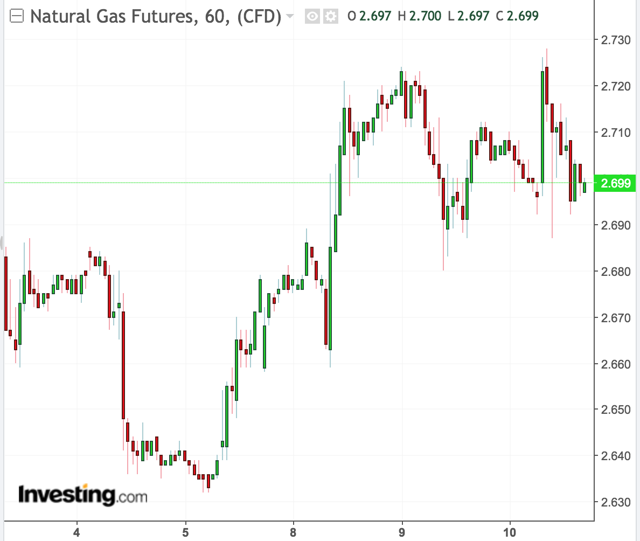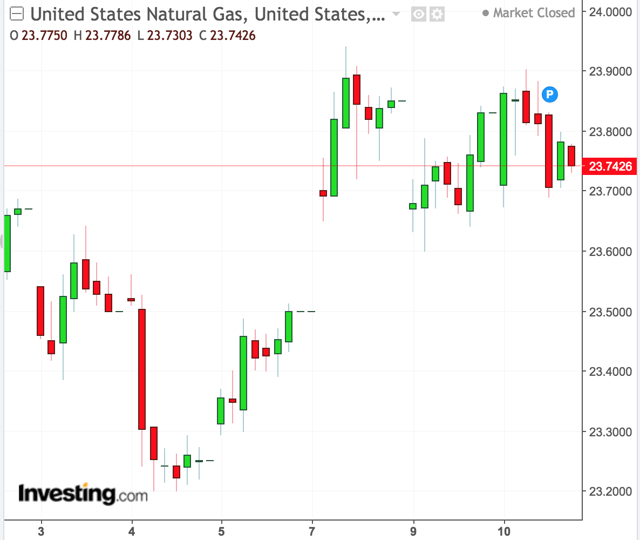Investment Thesis
Temperature variability and a lightened demand, amongst other variables, are expected to keep natural gas prices range-bound in the near term.
Market trades sideways ahead of Thursday's storage report; forecast models indicate cooler late April pattern
The Energy Information Administration (EIA) is expected to release its weekly natural gas storage report Thursday morning. The report should provide further insight as to the strength of the injection season.
The front-month May natural gas futures contract which trades on the New York Mercantile Exchange (NYMEX) closed flat on Tuesday to settle at $2.70. Trading range during Tuesday's session was again very tight at only 2 cents from $2.72 to $2.70. Figure 1 below is a chart showing the price trend of NYMEX's front-month May futures contract over the past 5 days.
The United States Natural Gas ETF (UNG), which is the unleveraged 1x ETF that tracks the price of natural gas, finished Tuesday slightly lower 0.38% to $23.74. Figure 2 below is a chart showing the price trend of UNG over the past week.
VelocityShares 3x Long Natural Gas ETN (UGAZ) and ProShares Ultra Bloomberg Natural Gas ETF (BOIL) were seen down 0.96% and 0.57% to $29.85 and $20.86, respectively. Meanwhile, VelocityShares 3x Inverse Natural Gas ETN (DGAZ) and ProShares UltraShort Bloomberg Natural Gas ETF (KOLD) were seen up 0.97% and 0.67% to $103.65 and $21.99, respectively. Figure 3 below is a chart showing the price trend of DGAZ over the past week.
The spot market saw rebounds from Monday across western Canada, and the central and southern U.S. Nova/Aeco was up $0.295 for the day on Tuesday. The Rockies (Opal) saw an increase from Monday up to $0.025 largely due to an increase in demand from cooler air coming in from the northwest on the backside of the "bomb cyclone" that's set to hammer

